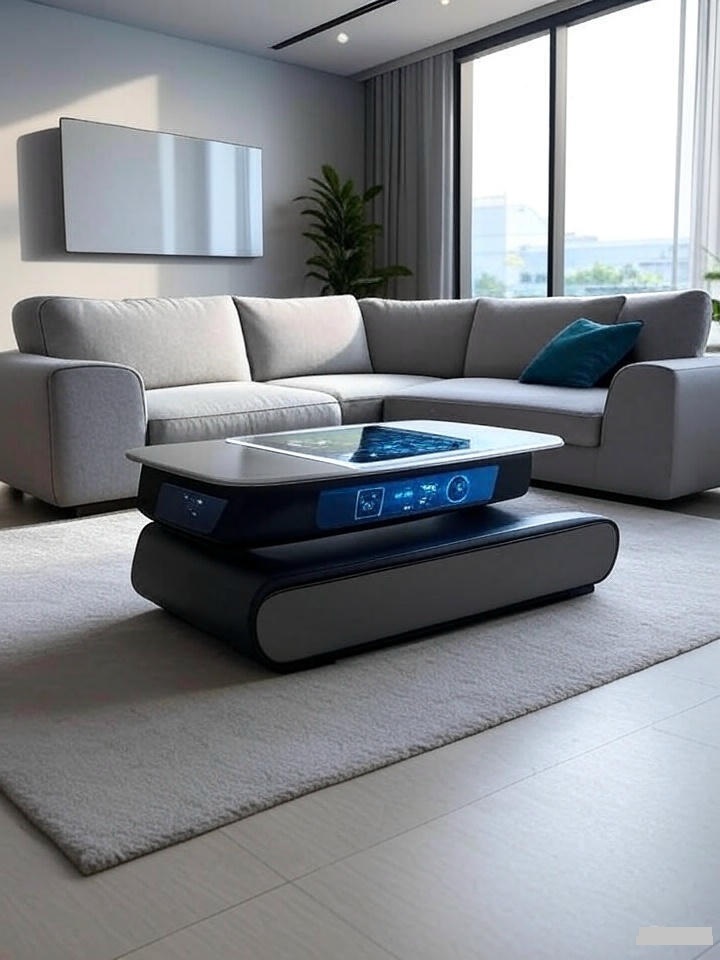
In a world increasingly dominated by technology, furniture is no longer just about aesthetics or comfort it’s about intelligence. The convergence of AI, IoT (Internet of Things), and automation is ushering in a new era of smart furniture that adapts to your needs, habits, and lifestyle. From voice-controlled recliners to self-adjusting desks, furniture is evolving rapidly becoming not just a part of the home but an active participant in it.
What Is Smart Furniture?
Smart furniture refers to tech-integrated home and office furnishings that can connect, communicate, and respond to users or other smart devices. These pieces often feature sensors, Bluetooth or Wi-Fi connectivity, automation, and AI-driven functionality. They don’t just serve a purpose they learn and adapt to the way you live.
AI and Automation: Changing the Game
Here’s how AI and automation are reshaping furniture:
1. Furniture That Learns From You
Imagine a smart bed that tracks your sleep patterns, adjusts firmness based on your body movements, and wakes you up with gentle vibrations at the optimal point in your sleep cycle. AI makes this possible by continuously analyzing data and improving user experience over time.
2. Ergonomic Adjustments in Real Time
Smart office furniture, such as AI-powered standing desks and chairs, can automatically adjust based on your posture, schedule, and work habits. They can even remind you when it’s time to stand, stretch, or take a break.
3. Voice & App-Controlled Living
Thanks to smart home ecosystems like Amazon Alexa, Google Assistant, and Apple HomeKit, you can now control your furniture with your voice or smartphone. Want your couch to recline, the table to light up, or the blinds integrated into your window seat to close? It’s just a command away.
4. Energy and Space Efficiency
Furniture embedded with motion sensors and timers helps reduce energy consumption by controlling lighting, charging ports, and more. Modular smart furniture can even reconfigure itself to fit different purposes transforming a bed into a desk, or a table into storage.
5. Enhanced Security and Monitoring
Some smart furniture integrates security features, like hidden storage that opens only via biometric access, or baby cribs that monitor temperature, movement, and breathing patterns, sending real-time alerts to parents.
Top Examples of Smart Furniture Today
- Smart Coffee Tables with built-in mini fridges, Bluetooth speakers, wireless chargers, and LED lighting.
- AI-Integrated Wardrobes that organize outfits and suggest clothing combinations based on weather or calendar.
- Smart Mirrors that display the news, weather, or your schedule while you get ready.
- Interactive Desks with digital whiteboards and productivity apps.
Why Consumers Are Embracing Smart Furniture
- Convenience: Everything is just easier from working to relaxing.
- Health Benefits: Better posture, sleep, and productivity.
- Efficiency: Saves time, energy, and even space.
- Style Meets Function: A futuristic aesthetic combined with cutting-edge technology.
What the Future Holds
The future of smart furniture looks hyper-personalized and connected. As AI gets smarter and machine learning evolves, we can expect furniture that not only responds to commands but anticipates needs adjusting temperature, lighting, or support without being asked.
Integration with augmented reality (AR) for virtual interior design, and blockchain for secure purchases and warranties, are also on the horizon.
Conclusion
The smart home revolution is not just about gadgets it’s about reimagining how we live, work, and interact with our surroundings. As AI and automation continue to advance, furniture will no longer be a passive part of your home it will be a smart, responsive, and essential member of your household.
If you’re planning your next furniture upgrade, consider going smart. After all, the future is not just coming it’s furnishing itself.










